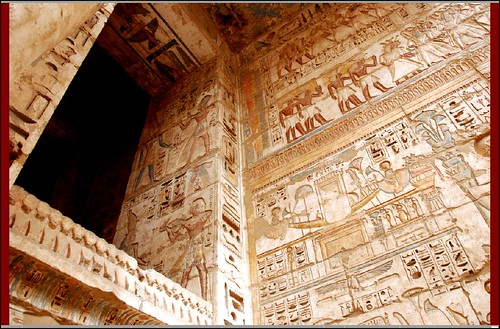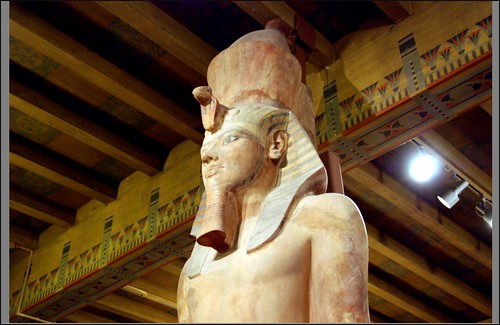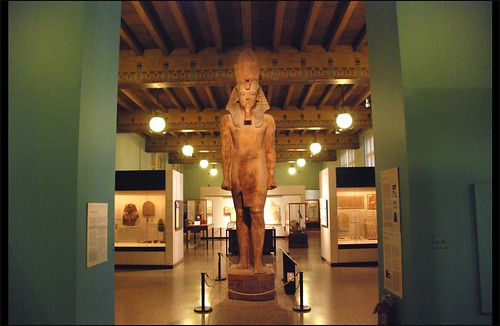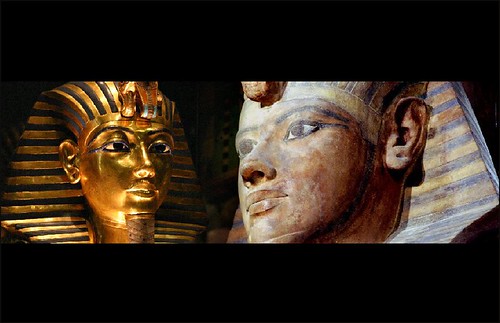De todas maneras, aquí dejo mi idea, esa sala podría ser algo mas divertida si le añadimos los playmobiles sobre Egipto:
http://www.playmobil.de/on/demandware.store/Sites-ES-Site/es_ES/Link-Category?cgid=Aegypter
de los cuales soy fan absoluta...pues nada: a jugar...!
MªCarmen
Un cordial saludo desde:
http://lagrutacerradadetaja.blogspot.com/
http://egyptaja.blogspot.com/
Item #: 7383
3 soldados del Faraón
martes 19 de enero de 2010
Re: [AE-ES] Los faraones resucitan...
A mi me parece una idea estupenda para los niños e idea de los Daneses que crearon LEGO. Lo de venderse bien es importante para extender los negocios.
Ojalá que a Playmobil se le hubiera ocurrido y hubiera una sala en el Museo del Cairo de sus estupendos juguetes egipcios.
Es solo una opinión
Un saludoMª José
martes 19 de enero de 2010
[AE-ES] Los faraones resucitan...
La idea de la empresa danesa me parece adecuada en cuanto que es una forma lúdica de acercamiento al pasado; pero no deja de tener su carga de intencionalidad interesada...
Sabemos que la concepción y funcionalidad de los museos ha cambiado y se pretende que estén abiertos a un público heterogéneo, y con una marcada función didáctica. Para hacerlos atractivos y accesibles han de ser algo vivo y abierto a nuevas experiencias, adecuadas a colectivos diferentes.
Creo que lo ideal sería un museo concebido para despertar en el visitante su "vena investigadora"; naturalmente compatibilizándolo con el respeto y el cuidado que tales reliquias exigen.
Lo de los daneses, no deja de ser un acercamiento a ese tipo de museo.
Anteriores, Ampliación
[AE-ES] Noticia : Los faraones resucitan en el Mus...
Galería de Hans Ollermann
Medinet Habu
Egypt 2009

Medinet Habu.
2008_0923_184616AB Oriental Institute, Chicago

This statue of pharaoh Tutankhamun, one of two nearly identical colossal images, was excavated by the Oriental Institute in Western Thebes near the Temple of Medinet Habu.
It is 17 feet and 4 inches tall, and thus the tallest ancient Egyptian statue in the Western Hemisphere.. A gift of the Egyptian gouvernment to the Oriental Institute of the University of Chicago.
The other statue is in the Egyptian Museum, Cairo.
(Camera: Nikon D80)
2008_0923_184531AB Oriental Institute, Chicago

This statue of pharaoh Tutankhamun, one of two nearly identical colossal images, was excavated by the Oriental Institute in Western Thebes near the Temple of Medinet Habu.
It is 17 feet and 4 inches tall, and thus the tallest ancient Egyptian statue in the Western Hemisphere.. A gift of the Egyptian gouvernment to the Oriental Institute of the University of Chicago.
The other statue is in the Egyptian Museum, Cairo.
(Camera: Nikon D80)
2008_0923_184444AB Oriental Institute, Chicago

This statue of pharaoh Tutankhamun, one of two nearly identical colossal images, was excavated by the Oriental Institute in Western Thebes near the Temple of Medinet Habu.
It is 17 feet and 4 inches tall, and thus the tallest ancient Egyptian statue in the Western Hemisphere.. A gift of the Egyptian gouvernment to the Oriental Institute of the University of Chicago.
The other statue is in the Egyptian Museum, Cairo.
(Camera: Nikon D80)
Hans Ollermann  disse:
disse:
Hi Sara,Nice to hear we share the same interests. Yeah, the Oriental Institute with its Tutankhamun statue is really great !
Here you see the death mask of the same pharaoh, photographed in 2004 when it was still allowed to photograph in the Cairo museum. Now not anymore, helas.....

Postado 11 meses atrás. ( permalink )
collage Tutankhamun

Left: The magnificent golden mask of Tutankhamun, Egyptian Museum, Cairo.
The Metropolitan Museum of Art was giving fantastic assistance to Howard Carter, when he discovered the tomb of Tutankhamun in 1922.
Sometime ago the golden mask received hospitality in the Met during an exhibition that was organised in this great museum.
In the superb Oriental Institute of the University of Chicago, (like in almost all important Egyptian Museums in the world) photography inside the museum(without flash of course) is allowed, in Cairo not anymore since a few years. In Chicago King Tut is photographed as a star by numerous enthousiastic visitors of the Oriental Institute while Tutankhamun in a way lost his star status in Cairo where no pictures are made anymore by the disappointed visitors of the Egyptian Museum.
Right: This statue of pharaoh Tutankhamun, one of two nearly identical colossal images, was excavated by the Oriental Institute in Western Thebes near the Temple of Medinet Habu.
It is 17 feet and 4 inches tall, and thus the tallest ancient Egyptian statue in the Western Hemisphere.. A gift of the Egyptian gouvernment to the Oriental Institute of the University of Chicago.
The other statue is in the Egyptian Museum, Cairo.
(Camera: Nikon D80)
Visit to the Oriental Institute, Chicago

This statue of pharaoh Tutankhamun, one of two nearly identical colossal images, was excavated by the Oriental Institute in Western Thebes near the Temple of Medinet Habu.
It is 17 feet and 4 inches tall, and thus the tallest ancient Egyptian statue in the Western Hemisphere.. A gift of the Egyptian gouvernment to the Oriental Institute of the University of Chicago.
The other statue is in the Egyptian Museum, Cairo.
(Camera: Nikon D80)
____________________________________________________________________________________
¡Obtén la mejor experiencia en la web!
Descarga gratis el nuevo Internet Explorer 8.
http://downloads.yahoo.com/ieak8/?l=e1
##########################################
RSS Feed de Amigos de la Egiptología
http://www.egiptologia.com/index.php?format=feed&TYPE=rss
##########################################
Noticias y Actualidad Egiptológica
http://www.egiptologia.com/noticias.html
Recomendamos: Sociedad Catalana de Egiptología
http://www.egiptologia.com/societat-catalana-de-egiptologia.html
--------------------------------------------------------------
LISTA DE DISTRIBUCIÓN DE AMIGOS DE LA EGIPTOLOGÍA - AE
Gestión Altas-Bajas y consulta mensajes enviados:
http://www.egiptologia.com/lista-de-distribucion.html
Moderador: Víctor Rivas egiptologia@egiptologia.com
Amigos de la Egiptología: http://www.egiptologia.com
Los mensajes de Amigos de la Egiptología son distribuidos gracias al apoyo y colaboración técnica de RedIRIS Red Académica Española - http://www.rediris.es













No hay comentarios:
Publicar un comentario